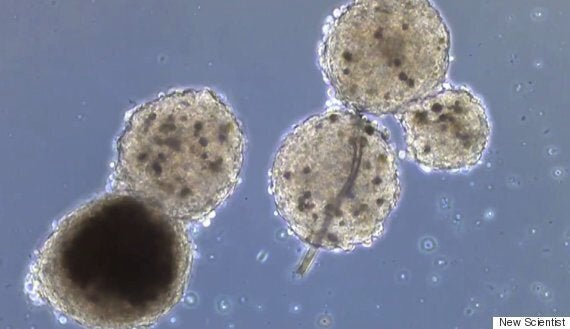While this might be hard to imagine, the image you're looking at below is actually that of a tiny heart and liver.
You can see a collection of tiny beating hearts on the right, and then on the left you can see a heart that has been joined with an equally miniaturised liver. All of them were 3D printed.

These artificial organs are the work of Anthony Atala and a team at Wake Forest Institute for Regenerative Medicine in Winston-Salem, North Carolina and are the results of a new technique which could herald a step forward in drug testing.
New Scientist reports that the organs were created by reprogramming human skin cells into heart cells. A 3D printer was then utilised to create the desired shape.
Why? Well the tiny organs can be developed to behave in exactly the same way that their larger counterparts would, making them ideal testbeds for new treatments and to probe the effects of new substances.